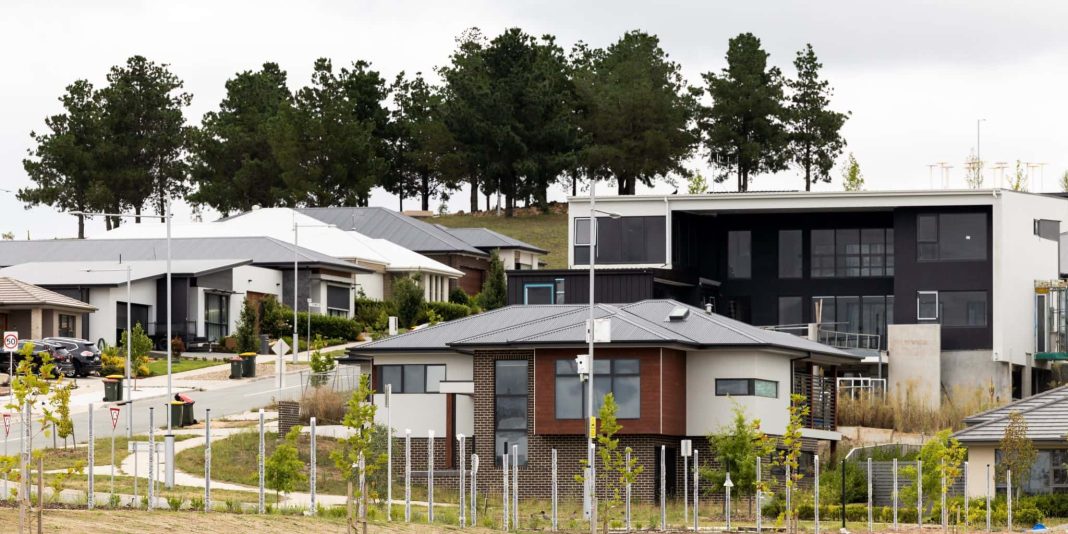Housing affordability in the ACT has remained stable while rental affordability has worsened, the latest Real Estate Institute of Australia (REIA) Housing Affordability Report released today finds.
Housing and rental affordability have continued to decline across most of the country, according to the REIA. Contributing factors include limited stock levels, inflation, and interest rate rises continuing to create trepidation in the market.
REIA president, Hayden Groves, said during the March quarter of this year, the proportion of income required to meet loan repayments has increased by 0.2 percentage points to 37.3 per cent nationally.
“Housing affordability improved in NSW and the NT, remained stable in the ACT, but declined in all other states,” Mr Groves said.
“Rental affordability declined more than housing affordability with the proportion of income required to meet median rent increasing by 0.5 percentage points to 23.5 per cent. Rental affordability declined in all states and territories except the NT.
“Tasmania remains the most unaffordable state to rent, with income needed to rent sitting at a huge 30.8 per cent.”
During the quarter, the number of first homebuyers drastically declined by 22.5 per cent, dropping to 29,093, said Mr Groves. Over the past 12 months, the number has fallen by a massive 33.9 per cent.
“First home buyers now make up 31.6 per cent of owner occupier dwelling commitments, a decrease of 2.7 percentage points over the quarter and 8.7 percentage points over the year. The number of first home buyers fell over the March quarter in all states and territories,” he said. “Declines ranged from 10.5 per cent in WA to 40.2 per cent in the NT.”
The Reserve Bank of Australia’s announcement last month of further interest rate hikes will likely contribute to further declines in housing affordability, he said.
“We expect the number of first home buyers has continued to decline despite the implementation of government grants and incentives.”
The average loan size for a first home buyer increased to $475,544, according to Mr Groves, which is a rise of 0.9 per cent over the quarter, and 11.7 per cent over the past 12 months.
“The average loan size to first home buyers increased in all states and territories, ranging from 0.1 per cent in NSW to a whopping 9.8 per cent in Tasmania,” he said.
“The total number of owner-occupied dwelling loans decreased to 91,922, a decrease of 16.1 per cent over the March quarter and a fall of 15.9 per cent over the past 12 months. The total number of loans for owner-occupied dwellings decreased in all states and territories over the March quarter. Decreases ranged from 8.2 per cent in WA to 21.3 per cent in NSW.
“Over the March quarter, the average loan size rose to $603,395, an increase of 2.1 per cent over the quarter and an increase of 19.2 per cent over the past 12 months. This is the largest annual increase since the current Australian Bureau of Statistics (ABS) series began in 2002.
“Over the quarter, the average loan size grew in all states and territories except the NT which had a marginal decline of 1.1 per cent. Increases ranged from 1.0 per cent in the ACT to 6.1 per cent in SA. Over the past 12 months, the average loan size increased in all states and territories with NSW recording the highest annual growth rate of 21.6 per cent.
“With the federal election 2022 now behind us, it is time to get to work on the fundamentals of housing supply and affordability for Australia’s renter, first time buyers and homeowners.”
Meanwhile, the latest housing loan commitment figures from the ABS shows a 6.4 per cent drop in April to $31 billion. The value of new housing loans also fell to 7.3 per cent for owner-occupied lending and 4.8 per cent for investor lending.
The rising cost of living and interest rates are reflected in the figures, Mr Groves said.
“Despite this, the value of new owner-occupier loan commitments is still 44 per cent higher than it was two years ago and 113 per cent higher for investor loans,” he said.



